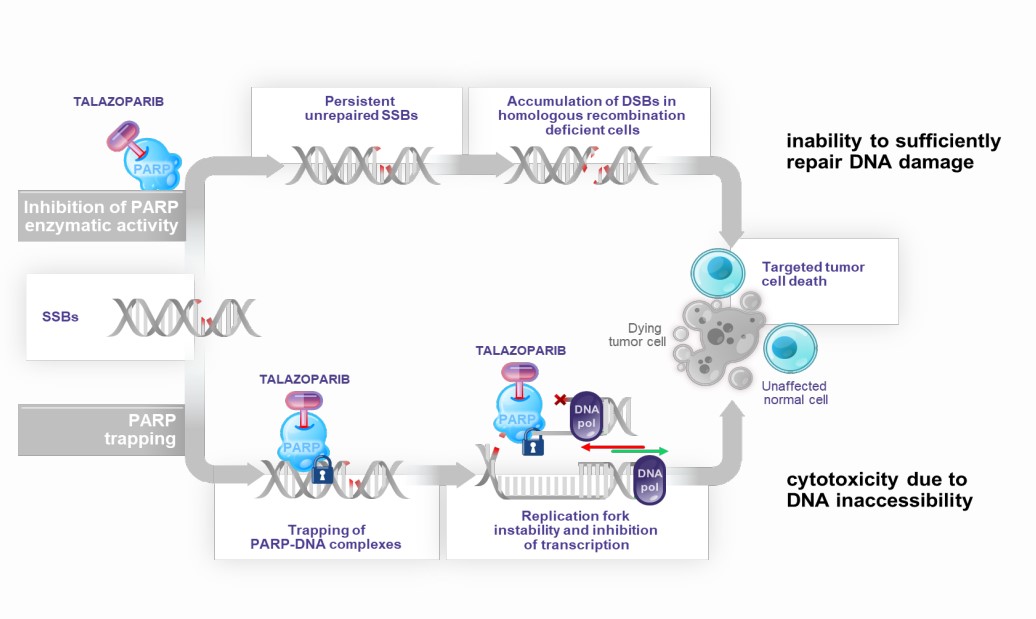Talazoparib
Overview + Rationale
- DNA double-strand breaks (DSBs) frequently arise in cells and, if left unrepaired, cause senescence or cell death
- Homologous recombination (HR) is the most important DSB DNA-repair pathway with two key contributors being BRCA1 and BRCA2. Cells with defective BRCA have compromised ability to repair DSBs
- Poly (ADP-ribose) polymerase (PARP) is an enzyme associated with single-strand, base-excision repair and can enable DNA replication and cell survival in BRCA-deficient tumor cells
- Talazoparib selectively binds to PARP and prevents PARP-mediated DNA repair of single-strand DNA breaks
- This enhances the accumulation of DNA strand breaks, promotes genomic instability and eventually leads to apoptosis in BRCA 1/2-mutated tumor cells (synthetic lethality)
Mechanism of Action
Possible dual cytotoxic mechanisms of PARP inhibitors.
- Catalytic inhibition of PARP is thought to interfere with the repair of DNA single-strand breaks (SSBs)
- Talazoparib is believed to trap the PARP on SSBs, based on preclinical data, preventing dissociation from damaged DNA, leading to replication fork instability

Stage of Development
Talazoparib is being investigated in combination with other agent(s) in the tumor type shown here. Safety and efficacy of talazoparib for the uses listed below have not been established.

 Back
Back

